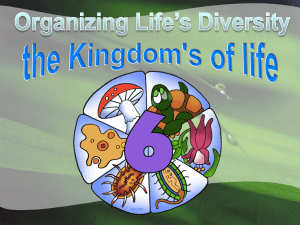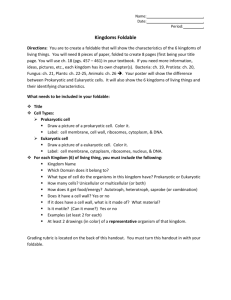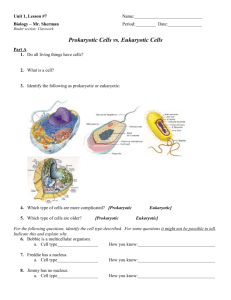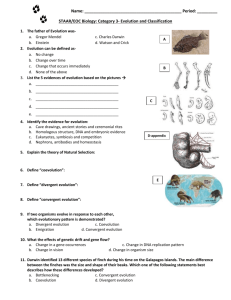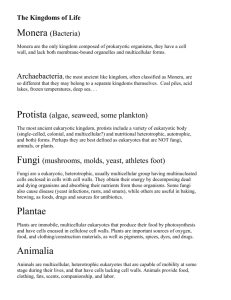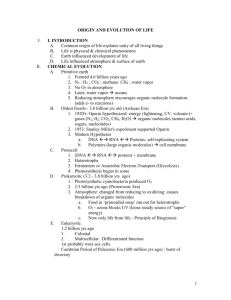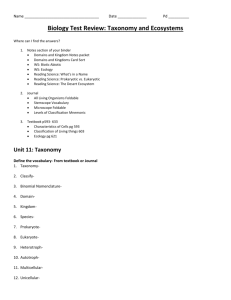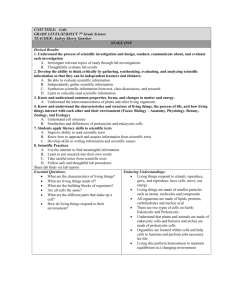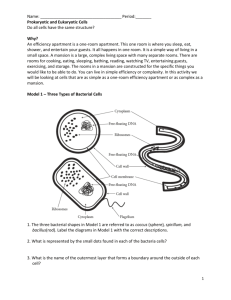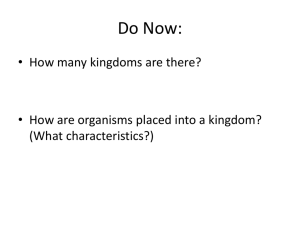7th Grade Science Midterm Exam Review Sheet
advertisement
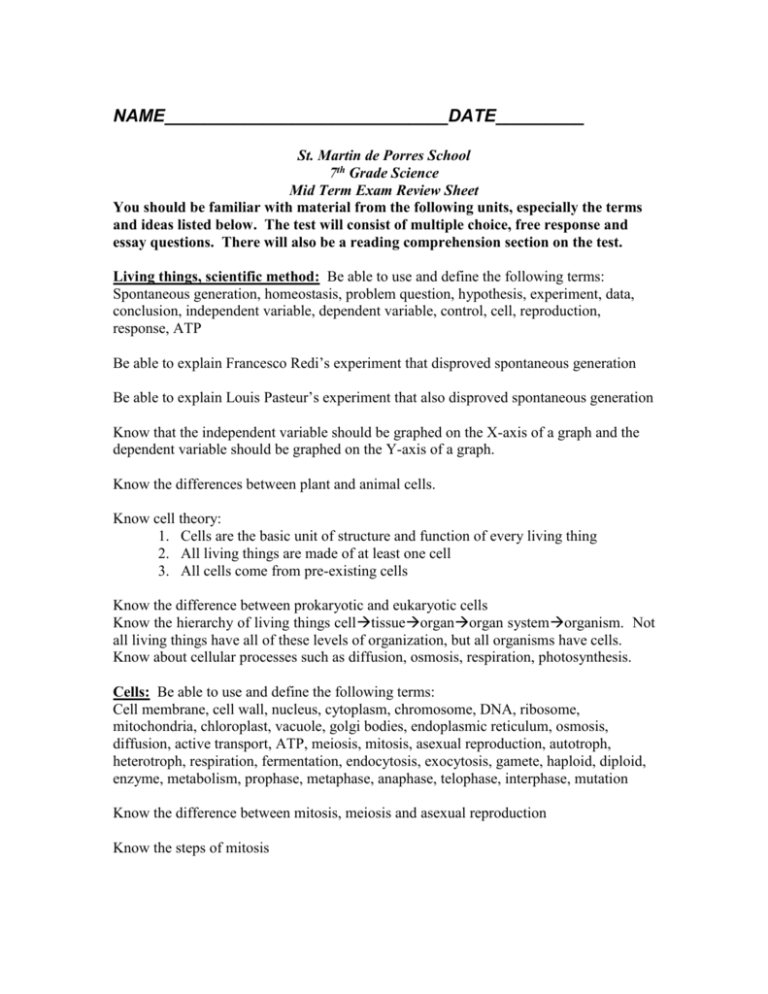
NAME_____________________________DATE_________ St. Martin de Porres School 7th Grade Science Mid Term Exam Review Sheet You should be familiar with material from the following units, especially the terms and ideas listed below. The test will consist of multiple choice, free response and essay questions. There will also be a reading comprehension section on the test. Living things, scientific method: Be able to use and define the following terms: Spontaneous generation, homeostasis, problem question, hypothesis, experiment, data, conclusion, independent variable, dependent variable, control, cell, reproduction, response, ATP Be able to explain Francesco Redi’s experiment that disproved spontaneous generation Be able to explain Louis Pasteur’s experiment that also disproved spontaneous generation Know that the independent variable should be graphed on the X-axis of a graph and the dependent variable should be graphed on the Y-axis of a graph. Know the differences between plant and animal cells. Know cell theory: 1. Cells are the basic unit of structure and function of every living thing 2. All living things are made of at least one cell 3. All cells come from pre-existing cells Know the difference between prokaryotic and eukaryotic cells Know the hierarchy of living things celltissueorganorgan systemorganism. Not all living things have all of these levels of organization, but all organisms have cells. Know about cellular processes such as diffusion, osmosis, respiration, photosynthesis. Cells: Be able to use and define the following terms: Cell membrane, cell wall, nucleus, cytoplasm, chromosome, DNA, ribosome, mitochondria, chloroplast, vacuole, golgi bodies, endoplasmic reticulum, osmosis, diffusion, active transport, ATP, meiosis, mitosis, asexual reproduction, autotroph, heterotroph, respiration, fermentation, endocytosis, exocytosis, gamete, haploid, diploid, enzyme, metabolism, prophase, metaphase, anaphase, telophase, interphase, mutation Know the difference between mitosis, meiosis and asexual reproduction Know the steps of mitosis Know the difference between haploid and diploid cells. Know that there are 46 chromosomes in a diploid human cell Know why it is necessary to reduce the chromosomal number in gametes by meiotic division Genetics/ heredity: Be able to use and define the following terms. Genetics, gene, chromosome, DNA, RNA, allele, trait, dominance, recessive, genotype, dominance, multiple alleles, pedigree, sex-linked trait, transcription, translation, replication, semi-conservative, replication, nucleotide, ribose sugar, deoxyribose sugar, adenine, guanine, cytosine, thymine, Know how to do a Punnett square and use it to predict outcomes of genetic crosses Know how incomplete dominance or multiple alleles can affect the outcome of a genetic cross Know how the steps of protein synthesis are related to each other. Be able to describe the structure of DNA Be able to correctly pair the nitrogenous bases: adenine with thymine, guanine with cytosine. Be able to describe replication, transcription and translation. Taxonomy: Be able to list and sequence the various levels of taxonomic hierarchy. Be able to write a scientific name in correct binomial nomenclature. Be able to read a simple dichotomous key. Know the 6 Kingdoms of living things and how they are different from each other. Be able to compare and contrast the similarities and differences between all 6 Kingdoms. Be able to correctly write a name in binomial nomenclature. Be able to assess the relatedness between organisms based on their genus and species The Bacterial Kingdoms: Be able to define prokaryotic and associate the term with the bacterial Kingdoms. Understand the difference between the archeobacteria and the eubacteria. Be able to compare and contrast prokaryotic and eukaryotic cells Be able to create a Venn diagram comparing and contrasting prokaryotic and eukaryotic cells. The Protist Kingdom: Know that the protists are single celled and eukaryotic. They may be either heterotrophic or autotrophic. They are the forerunners of the three multicellular Kingdoms. The Fungus Kingdom: Know that most fungus are multicellular (yeasts are the exception) and that they are heterotrophic and eukaryotic. Their cell walls are made of chitin. The Plant Kingdom: Know that plants are multicellular autotrophs with cell walls made of cellulose. They are eukaryotic. They have large vacuoles and chloroplasts. Be able to distinguish between angiosperms and gymnosperms. Be able to identify the different tissues in a vascular plant (Plant structure lab and Flower lab) Be able to discuss adaptations that enabled plants to move on to dry land. The Animal Kingdom: Know that animals are multicellular heterotrophs. They are eukaryotic and lack cell walls. All are capable of locomotion at some point in their life cycle. Be able to describe the different kinds of body symmetry, the different kinds of digestive systems and the different kinds of body support systems. Be able to identify the unique characteristics of a chordate and of a mammal. Differentiate between homeothermic and poikilothermic. People: Know the following people and their contributions to science. Gregor Mendel, Louis Pasteur, Francesco Redi, Charles Darwin, James Watson, Francis Crick, Rosalind Franklin, Carolus Linneaus Vocabulary: At a minimum, know all vocabulary Words of the Week. .(Both Quarters)
